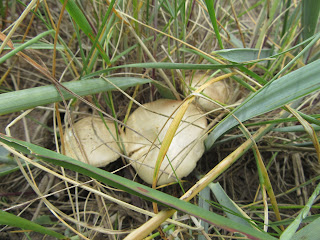I received an email from a friend who notified me that he'd found a fungus growing in his garage. Off I went later that day to take a look. It's not every day that I go to investigate a fungus growing inside a building.
Cellar Cup is often to be found on rotting sandbags, sacking, damp mortar and soil between damp paving stones. Fundamentally this fungus likes damp and moist conditions. I came across Cellar Cup a long time ago - that example was growing on discarded sacking. The example included in this post was covered in cobwebs but in prime condition.
Characteristics: Cup 1-5 cm across, cup-shaped, yellowish - buff with a paler inner surface. The outer surface is similar but can be darker with a scurfy texture that darkens towards the base.
This is an occasional fungus.
Below are some photographs.
 |
| Perspective showing the size |
 |
| Showing young |




